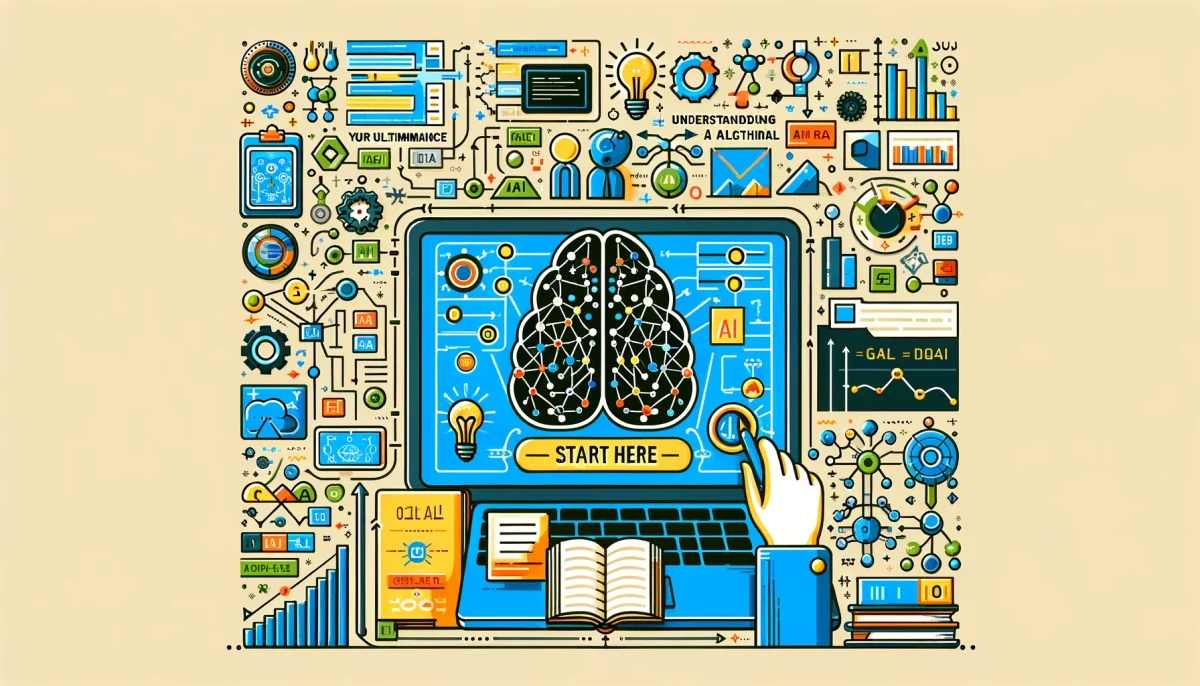In an age where technology is advancing at an unprecedented rate, one term you’ve likely heard but might not fully understand is “AI Algorithms.” These intricate rules and calculations are the backbone of artificial intelligence, powering everything from your smartphone’s voice assistant to life-saving medical equipment. But what exactly are AI algorithms, and why are they so crucial in today’s world? This article aims to demystify the complex world of AI algorithms, breaking it down into digestible pieces for beginners.
Understanding AI algorithms is not just for tech-savvy individuals or computer scientists; it’s for anyone who interacts with technology—virtually everyone. From business leaders looking to leverage AI for competitive advantage to everyday consumers using AI-powered apps, a basic understanding of AI algorithms can go a long way. This guide will delve deep into the various aspects of AI algorithms, from their mechanics to their applications and ethical considerations.
What Are AI Algorithms?
Definition and Importance
AI algorithms are sets of instructions designed to perform specific tasks or solve particular problems. They are the “brains” behind artificial intelligence, enabling machines to learn from data, make decisions, and even predict future outcomes. The importance of AI algorithms cannot be overstated; they are the driving force behind the rapid technological advancements we see today.
Types of AI Algorithms
AI algorithms can be broadly categorized into three types: supervised learning, unsupervised learning, and reinforcement learning. Each type has unique characteristics and applications, which we will explore in detail later in this guide.
The Mechanics of AI Algorithms
How They Work
Understanding AI algorithms’ mechanics can seem daunting, but it’s less complicated than you might think. At their core, these algorithms function by processing data, identifying patterns, and making decisions based on those patterns. They are often trained on large datasets, allowing them to improve their accuracy and efficiency over time.
Real-world Examples
To put it in perspective, let’s consider some real-world examples. AI algorithms are behind the recommendation systems of platforms like Netflix and Amazon, suggesting movies or products based on your past behaviour. They also power search engines like Google, sorting through billions of web pages to deliver the most relevant results. These are just a few instances demonstrating AI algorithms’ power and versatility.
Popular AI Algorithms You Should Know
Supervised Learning Algorithms
Linear Regression
One of the most basic yet powerful algorithms in the supervised learning category is Linear Regression. It’s widely used in various fields, including economics, healthcare, and engineering, to predict a continuous outcome variable based on one or more predictor variables.
Decision Trees
Another popular algorithm is the Decision Tree, which is particularly useful for classification problems. It works by breaking down a complex decision-making process into a series of simpler decisions, thereby making the process more understandable and manageable.
Unsupervised Learning Algorithms
K-Means Clustering
In unsupervised learning, K-Means Clustering stands out for its simplicity and effectiveness. It’s commonly used in market segmentation, document clustering, and image recognition.
Principal Component Analysis (PCA)
PCA is another unsupervised algorithm that’s widely used for dimensionality reduction. It’s particularly useful when dealing with high-dimensional data, helping to simplify the dataset while retaining its essential features.
Applications of AI Algorithms
Healthcare
AI algorithms are revolutionizing healthcare by aiding in diagnostics, treatment planning, and drug discovery. For instance, machine learning algorithms can analyze medical images with high accuracy, assisting radiologists in detecting anomalies that could be early signs of diseases like cancer.
Finance
In the financial sector, AI algorithms are used for risk assessment, fraud detection, and algorithmic trading. They can analyze vast amounts of data in real time, making them invaluable tools for financial institutions looking to make data-driven decisions.
Autonomous Vehicles
The rise of self-driving cars is largely attributed to advanced AI algorithms capable of processing sensor data and making split-second decisions. These algorithms ensure the vehicle’s safe navigation through traffic, adhering to road rules, and avoiding obstacles.
Ethical Considerations
Bias in Algorithms
One of the most pressing ethical concerns is the potential for bias in AI algorithms. If the data used to train these algorithms contain biases, the algorithms themselves can perpetuate these biases, leading to unfair or discriminatory outcomes.
Data Privacy
Another ethical consideration is data privacy. As AI algorithms require large datasets for training, there’s a growing concern about how this data is collected and used, especially when it involves sensitive information.
Understanding AI Algorithms
We’ve journeyed through the intricate world of AI algorithms, from understanding their mechanics to exploring their applications and ethical considerations. These algorithms are the driving force behind the technological advancements shaping our world, making it imperative to understand them.
As we stand on the brink of a new era defined by AI and machine learning, understanding AI algorithms is not just a technical necessity but a societal imperative. Whether you’re a business leader, a consumer, or simply a curious mind, a basic grasp of these algorithms can empower you to navigate the increasingly complex landscape of modern technology.
